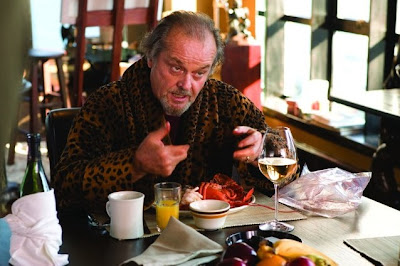 One of the things expected of you here in Hollywood – besides dating someone so young, people will assume you met at an Amber Alert – is being a total pro in front of the camera.
One of the things expected of you here in Hollywood – besides dating someone so young, people will assume you met at an Amber Alert – is being a total pro in front of the camera.A few months ago I listed some terms all actors should know to help them look like seasoned vets. Here are a few more:
Profiles. This is often used during commercial auditions. After you slate (state your name into the camera before performing the audition), the casting person will want you to turn to your left, hold for a moment, then turn to your right, providing a view of what you look like from different angles. Sometimes added after this is a nifty gauge to reveal your age, in which you hold your hands up palms-out in front of your face, then turn them around palms-in. As a result, you may want to start doubling up or the hand lotion, or fly around the earth like Superman and try to reverse time. Up to you.
Used in a sentence: ME, INTO CAMERA: “Hi, I’m Matt Shevin.” CASTING PERSON: “Okay, and profiles… and hands…”
Back to one. During filming, when a longer shot calls for movement from you, this is the term used to reset the scene from the beginning for the next take. On a commercial I was in, I had to navigate a minefield of a kitchen, picking up a big bowl of fruit, peering over my wife’s shoulder as she browsed her iPad, bringing the fruit to the dinner table, talking to my kids, etc., etc. After each take, the director wanted to shoot the whole scene again all at once, so he had me go back to the mark from which I began. It’s shoots like this that make it key to really keep your energy up and stay focused. Alec Baldwin won’t do a scene until he gulps down a big concoction of caffeinated beverages that he likes to call his “acting juice.”
Used in a sentence: “Okay, everybody back to one!”
Two-shot. For almost every shoot, multiple camera setups are used to create a scene. Let’s say you and another character are having a conversation. First, the director will shoot the other character’s close-up, over your shoulder, then move the cameras to the other side and shoot you. Next comes the two-shot (or master shot), of both of you in the frame together. Supposedly, Jack Nicholson, as proficient a technical actor as they come, will purposely do something subtly different during two-shots that ruins the continuity of a scene (like drop his fork in a dinner scene) so that later, the editor will spot this “mistake” and have to use more of Jack’s close-up shots, giving him more solo screen time.
Used in a sentence. “We’re going to do the close-ups first, then move on to the two-shot.”
Eye-line. On a close-up shot of just you, the crew will tell you were to focus your eyes as if you’re talking to another character. It can feel a little odd because it may not be where you would normally be looking when talking to a person, but on camera it looks right. Sometimes a crew member will stand in a spot reading the lines of the character opposite you so you can focus on him. Other times you’ll just look at a piece of colored tape stuck to the set. I’ve heard Tom Hanks is such a pro that he’ll always show up on his off day to do a scene with you from behind the camera, because he wants to help you get it right by giving you his take in full character. He’s a stud.
Used in a sentence: “Where’s my eye-line?”
Go get ‘em.




